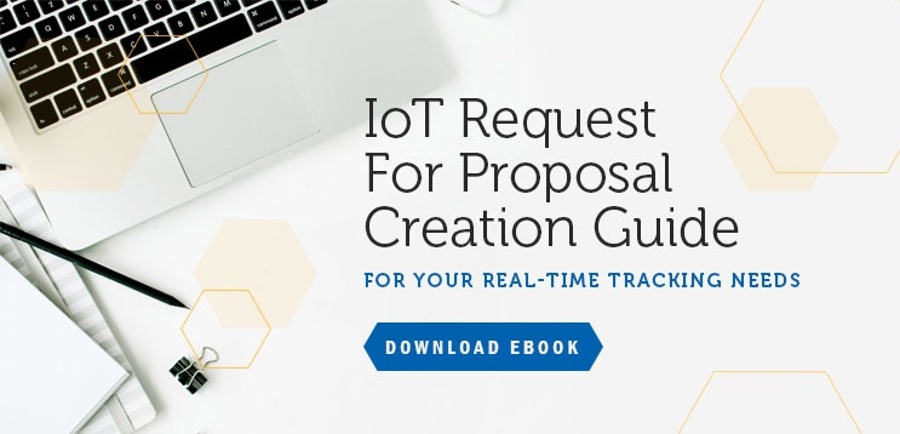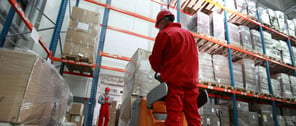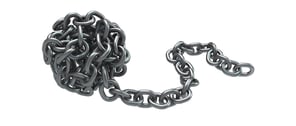Most companies have an Enterprise Resource Planning (ERP) software in place to support their business and supply chain management needs. The combination of IoT and ERP can provide additional real-time data, which can give existing ERPs live supply chain visibility into the products and services they capitalize on.
Can your ERP effectively handle and leverage this IoT data?
Can your ERP trust the authenticity and security of this IoT data?
What is Blockchain, and can you integrate it with existing supply chain operations using your ERP?
How difficult will it be, and more importantly, how much will it cost?
These are some of the topics we’ll delve into right now.
Stay tuned to find out.
Analyst firm Gartner expects 20.4 billion* Internet of Things (IoT) devices to be deployed by 2020. You may have also heard about Blockchain, a digital network technology that can provide quick, authentic, yet secure mode of managing data flows along the supply chain — something that’s already popular for transactions of cryptocurrencies like Bitcoins and Ethereum smart contracts.
When you broach topics like supply chain digitization, IoT, and Blockchain, the questions on the manufacturing and supply chain side with are:
- Is your organization prepared to take on the Internet of Things (IoT) and ultimately Blockchain?
- How do you go about integrating IoT and Blockchain into an existing ERP?
- How can you get the most benefit (and ROI) from an IoT enabled ERP or a Blockchain ERP integration?
- How much will it cost to build and operate an integrated, real-time, and secure system for better data-driven decision making, with your ERP as the core?
To answer these questions holistically, we will walk through the journey of how ERPs were used in the past, how they are currently being used with IoT, and how Blockchain can enhance supply chain ERP.
The Supply Chain ERP of the Past
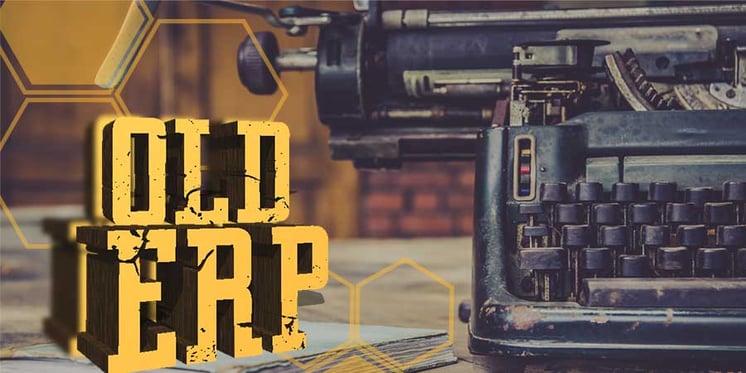
Most supply chain ERP solutions are software applications that help organize business processes and provide data about goods and services that are “pushed” out to customers.
Data entry into a supply chain ERP system is mostly manual, and prone to human error. There are a growing number of semi-automated systems available that use a barcode or RFID systems, but they still need some amount of manual intervention to scan and log data, especially when a handheld RFID or barcode scanner is used.
Therefore, the biggest drawback with initial ERP systems was that they lacked real-time, automated data collection to help with prompt decision making.
Advent of Real-Time IoT Visibility
The IoT allowed for real-time supply chain visibility through the use of smart sensors, constantly connected devices, and cloud-based data storage and analytics platforms.
A well set up supply chain visibility solution using IoT can help:
- Track and trace valuable shipments, of pharmaceuticals, food products, shipping containers, cars, and so on. This is possible using portable IoT sensor devices with GSM or GPS based shipment location monitoring capabilities. It’s now possible to get location data for shipments in real-time, irrespective of the shipping carrier or mode of transport used.
- Monitor the condition of shipments in transit. Shipments of food products or pharmaceutical products are often temperature-sensitive and prone to damage or spoilage if not transported under the right conditions. More advanced portable shipment tracking devices come loaded with additional sensors that can help monitor shipment conditions such as temperature, humidity, physical shock, and tilt. IoT shipment condition monitoring devices can detect any deviation from ideal shipping conditions, some can even generate alerts and enough advanced warning that gives shippers an opportunity to contain damage and salvage shipments before it’s too late.
- Improve supply chain security and protect high-value products against cargo theft. Shipment tracking and security devices can help detect anomalies like route deviations or container doors opening before arriving at its final destination, both tell-tale signs of cargo theft in progress. Cargo tracking and theft prevention IoT solutions can help detect such situations and generate live alerts in the form of a text message or an email.
This “IoT real-time visibility” becomes more actionable and when it works in conjunction with the rest of your enterprise data – which resides in your ERP cloud.
Today’s IoT Enabled ERP
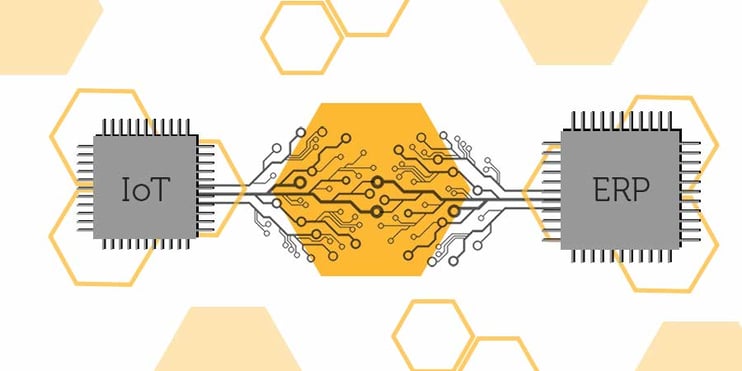
Earlier supply chain ERP applications weren’t built to receive external data from sensors.
As organizations transition to more “digital” data management and decision-making tools, there is a growing need to plug in data from external sources like IoT devices and other shipment tracking platforms. IoT ERP integration can do just that, giving companies a valuable tool to optimize operations and improve customer service, and create new business opportunities.
Efficient track and trace, shipment condition monitoring, and better cargo security can help fulfill larger business needs when integrated with ERP supply chain management systems. This is possible by translating real-time supply chain visibility into actionable information for supply chain personnel, and tying real-time intelligence with the end-to-end supply chain digital data that’s beneficial to multiple stakeholders. Some of the benefits of end-to-end ERP data integration include:
- Competitive edge through “Track and Trace”
Whether it’s to plan better production schedules, run lean supply chain operations using Just-in-time (JIT) inventory, or simply meet delivery schedules, business consumers are eager to know the status of their deliveries. Integrating live shipment tracking data with an ERP can help enterprises get better visibility into shipment ETA and plan downstream operations more predictably. - Improved product quality in the cold chain
Integrated shipment temperature tracking and condition monitoring solutions can help ERPs manage cold chains better, allowing the system to track and reduce spoilage, pre-order replacement stock to offset damaged product, as well as improve the speed and efficiency of product recalls in case there’s any risk to product integrity or public safety.
Another advantage of IoT ERP integration is better supply chain productivity.
A supply chain ERP system helps keep track of every shipment, warehouse, and logistics operation on a daily basis.
When enabled with real-time shipment information and actionable insights through the IoT, supply chain ERPs can better optimize order and delivery schedules, warehouse space utilization, inventory management, and several other administrative tasks that were otherwise slow and inefficient due to a lack of up to date information to enable better decision making.
Tips To Ensure a Successful IoT-ERP Integration
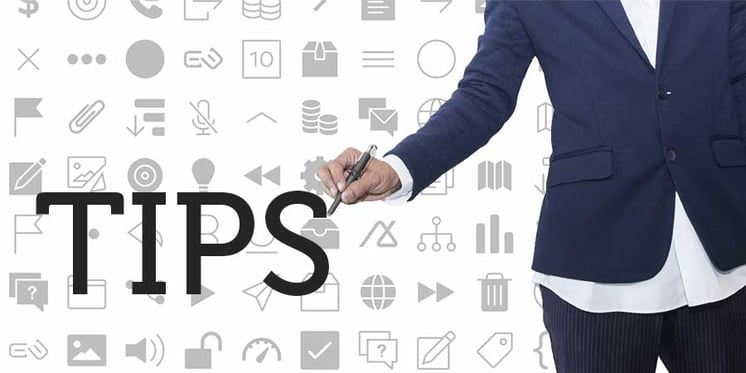
With a supply chain ERP already in place, what are the steps to properly integrate IoT to enable better real-time data driven decision making?
Here are some of the most important points to keep in mind when integrating IoT and ERP for better supply chain management:
- You don’t need to change your supply chain ERP system.
Rather, you need to improve it.
Identify the key business objectives where better visibility and real-time data (that an IoT solution provides) can add the most value to your business. Examples of key objectives could be monitoring the temperature of shipments, theft prevention and recovering stolen cargo, keeping track of assets in the field, and so on. - Try before you buy.
Run a “proof-of-concept (POC)” with several test IoT devices.- Define your criteria for “success” as well as a timeline for your POC (could range from days to weeks).
- Define which mode of transport is key to your business. (Truck, air, ocean, train or multi-modal).
- Determine if this test will be done “locally” or “globally.”
- Gauge ease-of-use and adoptability.
Determine whether the introduction of IoT shipment tracking devices creates any teething issues with your shipping and logistics teams around adoption and day-to-day operations. Establish detailed answers to questions like:- How will it work in the warehouse?
- Will it work on multi-modal shipments?
- How do you attach the device to shipping containers or packages?
- Determine the additional advantages of IoT ERP integration.
Are there any new services that you will be able to provide that can add value or increase revenue? For example, high-end automobile manufacturers can share current tracking status information (sometimes for a fee) with customers, allowing customers to track the delivery of custom-built vehicles from the manufacturing site to final delivery. It’s a value-added service that can both improve customer experience and add to the bottom line. - Decide on “Buy versus Rent” or “Capex versus Opex.”
Renting IoT tracking devices is better for business. It’s easier to deal with fluctuations in demand when running an OPEX operation, and there are also lower operational overheads for maintaining and upgrading the IoT tracking devices. - Check for regulatory compliances.
Portable IoT shipment monitoring devices use a range of radio frequency communication as well as chemical battery technologies. The tech used needs to conform to regulatory requirements, especially when used in international shipments. Safety standards and restrictions on the import of hazardous chemicals (that may be part of the portable battery powered IoT shipment tracking devices) could affect where the tracking solution is deployable.
The ERP of the Future: “Blockchain of Things”
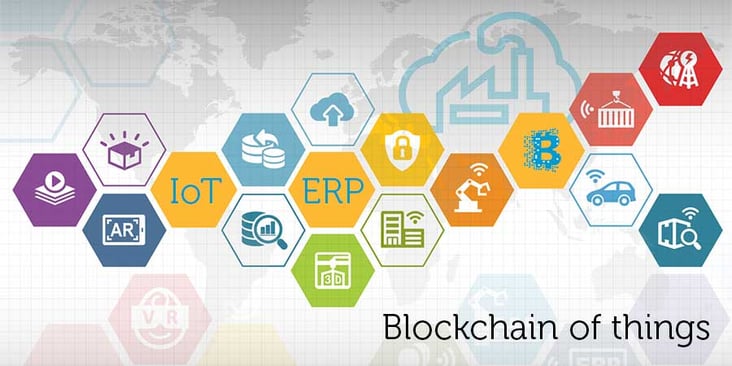
A distributed or global supply chain needs easy and secure data exchange to work together seamlessly. Typical supply chains also involve several external players like 3PLs, logistics partners, or business associates that may need access to sensitive shipping information.
Supply chain ERPs that are built to integrate external data, share information, and make distributed supply chain management easier need a means to both share and secure supply chain data and make sure vital information doesn’t make its way — knowingly or unknowingly — to a competitor, or worse, cargo thieves.
Even if a secure system to share information exists in a supply chain ERP, the data still needs to be validated or authenticated, especially when there are minor discrepancies that need to be reconciled.
Blockchain, the technology that cryptocurrencies are built on, has the potential to change that.
To put it simply, Blockchain is a database like system that keeps a permanent shared record which is shared among thousands of systems around the world, all of which reflect the same current state of something.
That something could be anything – an invoice, an asset, proof of delivery, or cargo you’re trying to keep track of.
Each blockchain is a time-stamped record of every update to the something that’s tracked. A change in location, ownership, or current state, for example, can be logged and appended to the record as a new block in that record.
By replicating the state and trail of that something on multiple machines (called nodes) around the world, it’s easy to differentiate a genuine record from a fake one — all you need to do is check a record against the updated copies out there; if the changes don’t add up, you can bet it’s a fake.
What that means for supply chains is trustworthy data, an assurance that the information on products (or the products themselves) moving through a supply chain are authentic, as well as quick and easy availability of important information to stakeholders that need it.
Why Blockchain is Important for a Connected Supply Chain.
Supply chain digitization is an essential prerequisite to the implementation of Blockchain security measures in supply chain management systems.
While the IoT can help simplify and improve the extent to which supply chain digitization is possible, modern supply chain ERPs will rely on Blockchain technology to secure their IoT data capture and information exchange systems.
As a growing number of companies deploy IoT devices for automated data capture and enable secure sharing, the value of this data will prove to be very important.
Closing Comment
In my experience, using an IoT solution in connection with ERP has helped companies become more customer focused, and it has also improved their supply chain visibility using this real-time data feedback.
Based on what I’ve seen among companies that use portable to augment their ERP, IoT can be connected to any existing supply chain ERP or business intelligence system. This is also a great way to prepare for using Blockchain in the future.
This was a guest post by Jim Sabogal, the Healthcare/ Lifesciences Vertical Lead for Business Development at T-Systems, North America, on how to use your ERP to support the Internet of Things (IoT) and leverage Blockchain in the future.


